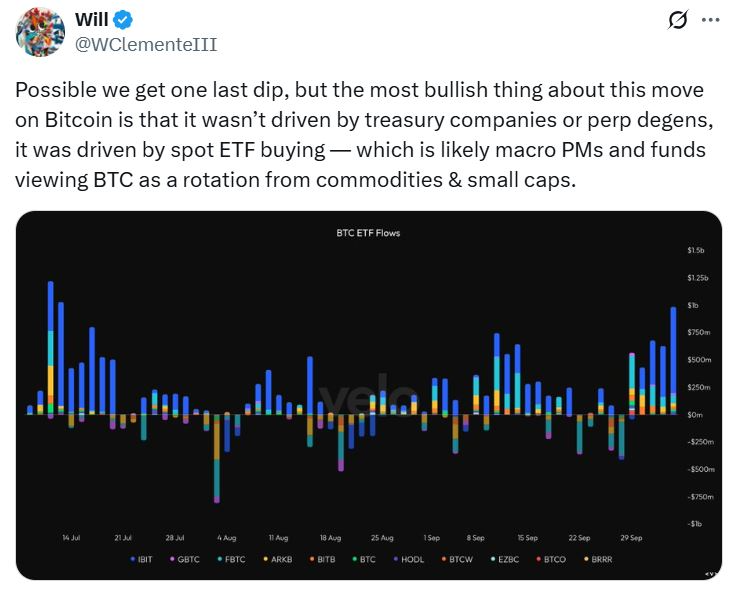
Bitcoin Purchases Reach $1.2 Billion, Yet ETFs Take Center Stage
Last week saw Bitcoin treasury firms purchasing over 6,700 BTC, primarily fueled by Japanese firm Metaplanet, while Bitcoin ETFs made significant inflows.
Last week, businesses accumulated $1.2 billion in Bitcoin (BTC). The leading contributor was Metaplanet, a Japanese investment firm, which purchased 5,258 BTC during the week.
In contrast, Bitcoin ETFs observed significant inflows, totaling $3.24 billion, closing in on their November 2024 record.
 BTC Image
BTC Image
Update on Oct. 6, 5:40 AM UTC: Further details were added from Binance Australia GM Matt Poblocki.
Despite significant purchases by treasuries, analysts argue that ETF inflows sparked last weekend’s BTC price surge, as Bitcoin reached a new high of over $125,000 on Saturday. This inflation can be traced to restrictions in cryptocurrency supply, alongside a favorable macroeconomic environment and institutional demand.
According to Vincent Liu, the chief investment officer at Kronos Research, the expanding ETF inflows were the primary catalyst. Liu pointed out, “Institutional adoption, dwindling supply, and macro improvements will likely support Bitcoin’s growth.”
On the institutional front, Matt Poblocki indicated that investments are retreating towards established cryptocurrencies, indicating a shift towards market stability.
“This rally signifies Bitcoin’s position on the mainstream financial landscape.”
Translation: This rally signifies Bitcoin’s position on the mainstream financial landscape.
Will Clemente III, a crypto analyst, echoed these sentiments, emphasizing that the rise is primarily driven by ETF investments rather than corporate treasury purchases.
 ETF Image
Source: Will Clemente
ETF Image
Source: Will Clemente
Eric Balchunas of Bloomberg also noted the enhanced ETF activity, adding, “ETFs saw a surge last week with inflows of $3.3 billion, bringing the yearly total to $24 billion.”
As institutions continue to absorb Bitcoin faster than miners can supply it, the potential for Bitcoin ETF inflows to fuel upcoming price increases remains high, especially with forecasts for continued institutional interest and diminishing supply.



